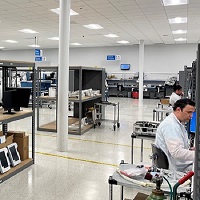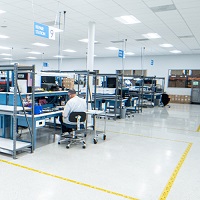
Nearshoring, Onshoring and Offshoring: What’s the Difference?
What is Nearshoring?
Nearshoring is the process of establishing production near your national borders, customarily within the same region or continent of your company’s headquarters. Namely, a company based in the United States may nearshore their manufacturing to Canada or Mexico.
Benefits of Nearshoring?
In an efficient business model, the primary advantage of utilizing nearshoring is the proximity of the business to the nearshoring partner.
When you decide to nearshore, you eliminate the partner challenges faced with:
Nearshoring can enhance communication with your nearshore partner, as this outsourced production method allows original equipment manufacturers (OEMs) to collaborate with their nearshoring partner in real-time. Moreover, nearshoring is cost-effective.
For all of these reasons, a PwC study on collaborative partnering reports that 66% of the customers indicated a clear preference for nearshore versus offshore outsourcing.
What is Onshoring?
Onshoring, also sometimes referred to as “domestic outsourcing,” is the process of outsourcing production from a large, metropolitan city to a smaller, economical city within national borders. For instance, a company based in San Francisco might onshore its production to Indianapolis.
Benefits of Onshoring
The primary advantage of onshoring is curbing expenses (although it is typically still more costly than nearshoring).
With onshoring, the challenges of working across barriers—physical, cultural, and language—are eliminated. Additionally, businesses that onshore production do not face the risks associated with offshoring; like foreign taxing policies.
What is Offshoring?
The process of offshoring is presumably what most individuals are familiar with. Unlike nearshoring and onshoring, offshoring is the process of establishing production on another continent. A few traditional offshoring locations include:
Benefits of Offshoring
Offshoring initially appears to be the least expensive approach when compared to nearshoring and onshoring. In traditional offshoring countries, expenditures are low, and the talent to complete production is high.
However there are hidden costs companies should take into consideration such as cultural differences, environmental impact and shipping / customs delays as well as differences in time zones when selecting an offshoring production approach.
Your White-Glove Nearshoring Partner
Quest has over 30 global locations to serve our client’s needs. Our team can coordinate logistics and repair services at sites worldwide, creating a consistent nearshore strategy across almost any region.
Our far-reaching locations allow OEMs to strategize which of our regional service hubs can serve as the best nearshore partner. With multiple locations to choose from, we can prevent long turnaround times and high costs so OEMs can provide improved customer service.
To learn more about how Quest provides White Glove Service, read our article here.
MAR-918 REV 1.0













